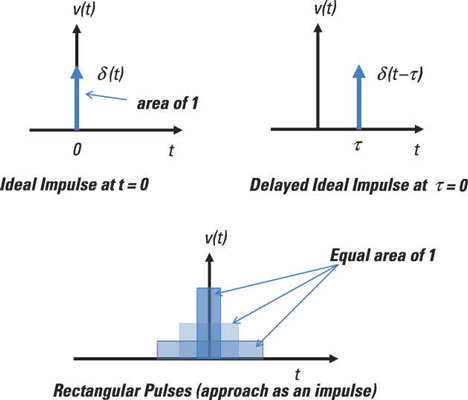Introduction
Have you ever found yourself wandering through a home goods store, overwhelmed by the vibrant colors, eclectic patterns, and innovative designs calling out to you? The joy of decorating our living spaces is a universal experience, but what drives this impulse deep within us? In this comprehensive article, we’ll explore the psychological, cultural, and personal factors that fuel the desire to decorate. Based on my experiences and research, we’ll unravel the complexities behind our love for aesthetics.
The Psychological Basis of Decoration
1. The Need for Self-Expression
From an early age, we learn to express ourselves through our choices in clothing, music, and eventually, our homes. Decoration becomes a canvas on which we paint our identities. The colors and styles we choose reflect our personalities and moods.
For example, I once visited a friend’s home adorned in minimalist Scandinavian design—clean lines, neutral colors, and functional furniture. The space felt calm and serene, mirroring her personality. In contrast, my own home bursts with vibrant colors and eclectic art—a reflection of my energetic and creative spirit.
Self-Expression vs. Societal Norms
While self-expression is crucial, societal norms also play a role. We often decorate to fit in or to stand out amongst peers, creating a unique blend of personal and societal influences.
2. The Psychological Need for Comfort
Home decoration serves to create a sanctuary, providing comfort and security. The act of beautifying our environment can trigger feelings of calmness and happiness. Studies have shown that well-decorated spaces can enhance mood and reduce stress.
The Impact of Color Psychology
Specific colors can evoke different emotional responses. For example:
| Color | Emotional Response |
|---|---|
| Blue | Calmness, Trust |
| Red | Energy, Passion |
| Green | Balance, Refreshment |
| Yellow | Happiness, Energy |
3. Nostalgia and Memory
Our spaces often reflect memories: childhood homes, significant life events, or travel experiences. The impulse to decorate can be fueled by the desire to recreate or reminisce about past experiences, making our homes a sanctuary of cherished memories.

Decorating with Meaning
For instance, I like to hang up travel photographs from my adventures. Each frame tells a story, inviting me to reflect on those beautiful moments each time I pass by.
Cultural Influences on Decoration
1. Cultural Aesthetics
Every culture has its unique aesthetic principles that influence decorating styles. From traditional motifs to modern interpretations, our cultural backgrounds shape our preferences and choices.
Regional Styles
Consider the warmth of Mediterranean décor versus the minimalism of Japanese design. Each style reflects geographical and cultural backgrounds, influencing the way we decorate.
2. Globalization and Access to Styles
Globalization has made diverse styles accessible, allowing us to blend aesthetics from around the world. This fusion can create eclectic spaces, showcasing a powerful personal narrative through decoration.

Personal Experience
Having traveled extensively, my home is a collection of artifacts and decor items from various cultures. Each piece reflects a story, a moment, or a memory, contributing to the rich tapestry that defines my personal aesthetic.
The Role of Trends in Decoration
1. Following Trends vs. Personal Style
Decorating styles often shift with trends, influenced by social media, celebrity endorsements, and design movements. While it can be tempting to follow trends, it’s essential to ensure that your space reflects your personal tastes.

Pros and Cons of Trendy Decor
Here’s a quick comparison:
| Pros | Cons |
|---|---|
| Modern look | May feel outdated quickly |
| Exciting and fresh | Can be costly |
| Encourages creativity | May not reflect personal style |
2. Sustainable and Timeless Design
Instead of solely focusing on trends, consider timeless designs that withstand the test of time. Choosing sustainable materials and designs can also resonate with your values, enhancing the deeper purpose behind your decorating choices.

Practical Tips for Decorating Your Space
1. Understand Your Preferences
Before diving into decoration, take time to explore your preferences. Consider creating a mood board that showcases colors, patterns, and styles that resonate with you.
2. Start with a Focal Point
Choose a focal point in your room to build your decor around. This could be a piece of art, a striking piece of furniture, or even an architectural feature. Having a focal point can guide your decorating decisions.

3. Mix Textures and Layers
Incorporating various textures can add depth and interest to your space. Combine soft fabrics with hard surfaces, shiny materials with matte finishes, and layer various elements to create an inviting atmosphere.
4. Personalize Your Space
Incorporate personal items that spark joy—photographs, souvenirs, or heirlooms—to make your space uniquely yours. Remember, decoration is about creating a home that feels comfortable and authentically you.

Conclusion
The impulse to decorate our homes is a tapestry woven from psychological needs, cultural influences, and personal experiences. By understanding these roots, we can embrace decoration as a meaningful expression of who we are.
Whether you find joy in reimagining spaces or simply appreciate the beauty around you, remember that decoration is an integral part of creating a sanctuary that truly feels like home.
FAQs
1. What are the psychological benefits of decorating my home?
Decorating can boost mood, reduce stress, and promote a sense of belonging and security, enhancing overall well-being.
2. How can cultural influences shape my decorating style?
Your cultural background may inform your choices in color, texture, and preferred designs, providing a unique lens for your decorating approach.
3. Is it better to follow trends or focus on personal style when decorating?
While trends can inspire creativity, blending them with your personal style can create a harmonious and authentic space that you truly love.
4. How do I start decorating if I feel overwhelmed?
Begin by understanding your preferences, creating mood boards, and starting with a single focal point. Take your time, and enjoy the process!